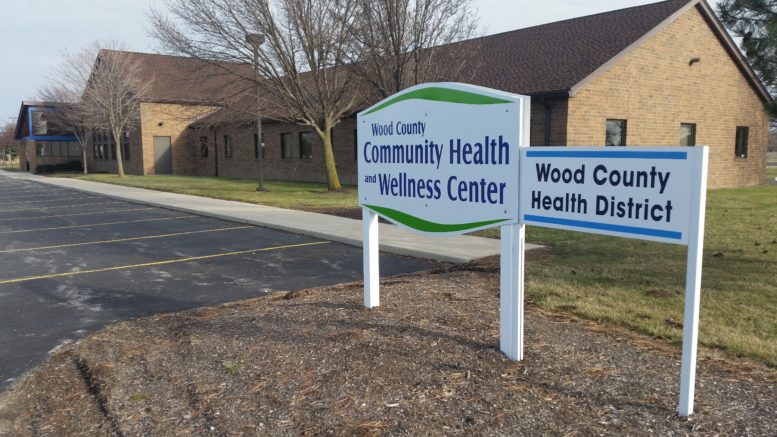By JAN LARSON McLAUGHLIN
BG Independent News
Wood County Health District has given local residents something to smile about.
The district’s Health and Wellness Center has been awarded $824,997 to build a dental center to serve Wood County residents regardless of their ability to pay, according to Wood County Health Commissioner Ben Batey. The district had applied for two projects, one to build a new center and one to renovate existing meeting rooms. The new center was funded.
There is also still a chance the health district will receive funds to help pay for dental staffing needs.
The health district has been trying for decades to address dental needs.
“This is a huge leap forward in meeting this,” Batey said. “It truly will be a benefit to our residents who are uninsured for dental or who have Medicaid, but can’t find a dental provider who will accept them as patients. It will be a whole new challenge, but we look forward to continuing to expand services to give our residents the greatest options for good health.”
The dental clinic will be an expansion of the existing Health and Wellness Center that is part of the health district offices at 1840 E. Gypsy Lane Road, Bowling Green. The dental clinic will have at least four patient chairs and will offer full services.
“Just like your typical dental office,” Batey said.
“It’s very exciting,” said Diane Krill, CEO of the health and wellness center. Krill said the need for dental services is great. “I just think with the community health assessment, it showed there was a dental need here.”
Many Wood County families cannot afford dental care for their children, or cannot find dental offices willing to accept Medicaid patients.
“We still see a lack of access for those individuals,” Batey said last year. “That’s still a spot where Wood County struggles.”
About a decade ago, local officials who cared about public health and about children met at the county health department to discuss the lack of dental care for local children. At that point there was one dentist in the county who freely accepted Medicaid patients.
The problem wasn’t an easy fix with a clear culprit. Dentists are reimbursed at a lower rate by Medicaid than through private insurance. And the Medicaid patients often have significant dental needs because they have delayed treatment due to the expense.
“That’s the first thing people put off,” Batey said. They wait till the pain is unbearable, and the cost is escalated.
Since then, the county has offered a Band-Aid solution that has been a lifesaver to some residents. Once a month, the Smile Express parks its RV-size mobile dental unit outside the Wood County Health District to treat patients who otherwise would go without care.
Though it has made a difference in many lives, it is just scratching the surface of the unmet dental needs in the county. Every time the health district conducts an assessment of the county, the lack of dental services for low income residents ranks high on the list of needs.
“It’s an issue of access to care. They don’t have dental insurance and they can’t afford the out of pocket expenses,” Batey said.
Wood County is not alone.
Last year, dental care was the top unmet health care need for nearly 157,400 children of all family incomes across the state, according to the Ohio Department of Health. Almost 486,000 children in the state lack dental insurance, and nearly 340,000 have never been to a dentist.
In Wood County last year, 21 percent of children had not had a dental appointment in the past year, while more than 9 percent had never been to the dentist.
Tooth decay is the most common chronic disease among children 6 to 11 years old, affecting about a quarter of all kids, according to the Centers for Disease Control. It worsens as they age, affecting almost 60 percent of those aged 12 to 19 years. The Ohio Department of Health cites that more than half of Ohio children have experienced tooth decay by the time they are in third grade.
And poor dental care doesn’t stop at the gums, Batey and Krill explained. Tooth infections can lead to problems elsewhere in the body, and poor teeth can lead to bad food choices causing poor nutrition.

